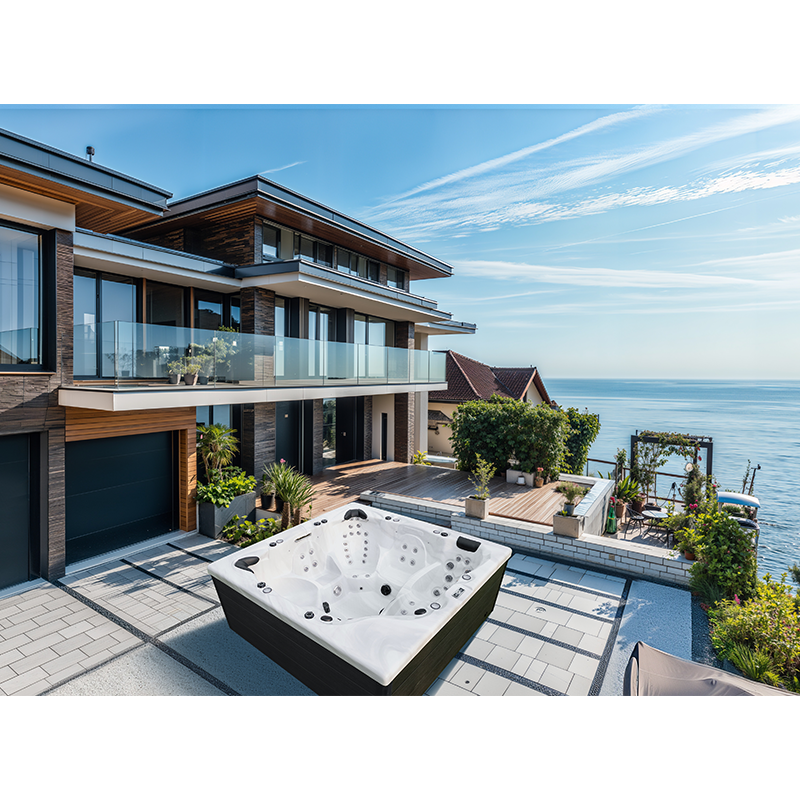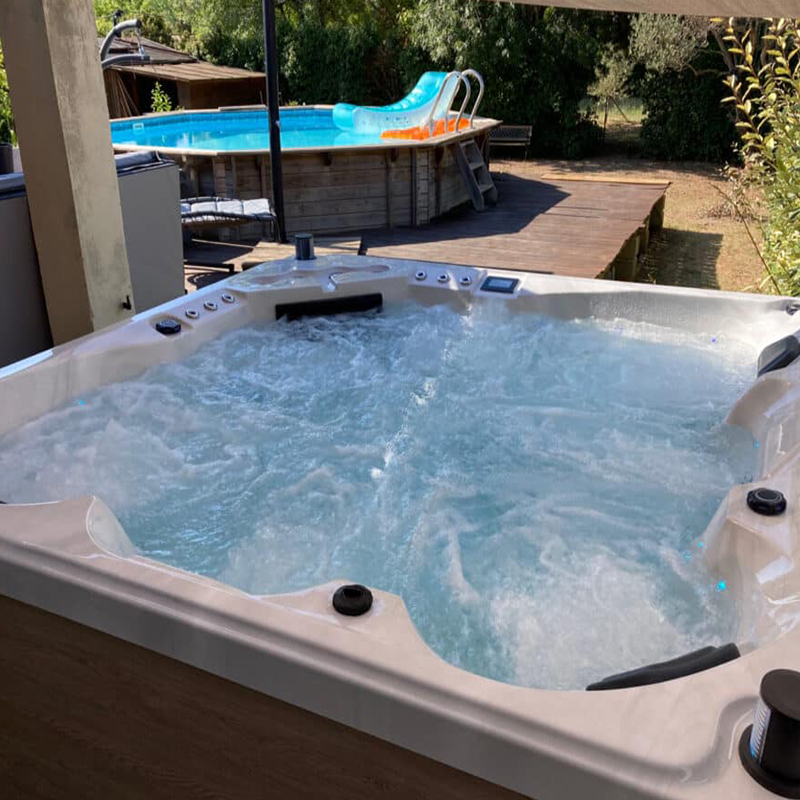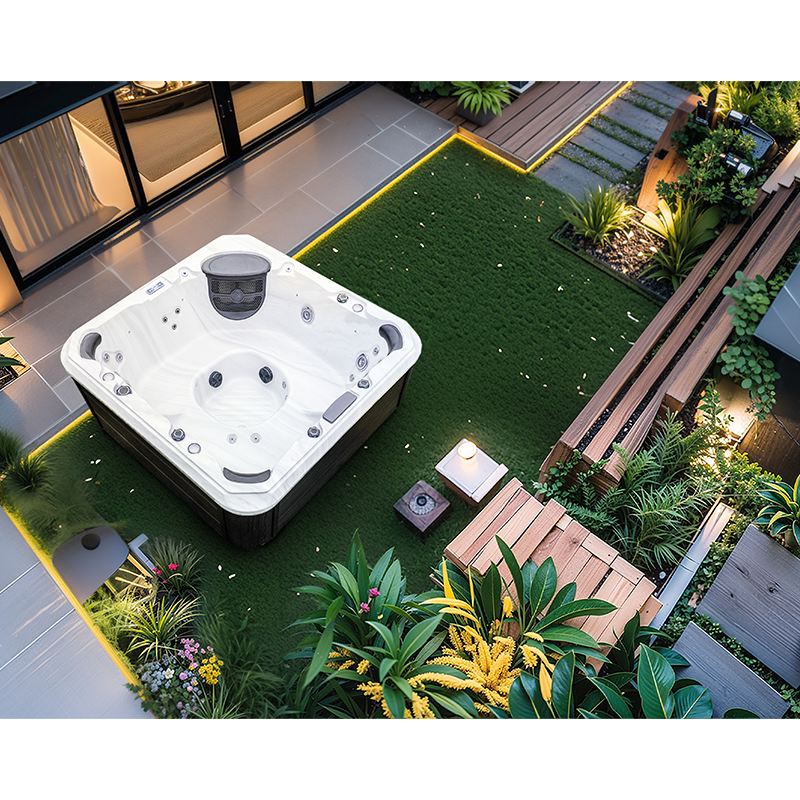
How Many Gallons of Water Can a Whirlpool Tub?
2024-10-11 15:30As a luxury device in home life, whirlpool bathtubs have been favored by more and more consumers in recent years. It enhances the bathing experience through massaging water flow and bubbles, helping to relieve stress and relax muscles. When buying or using a whirlpool bathtub, how much water the bathtub can hold becomes an important consideration. This not only affects the comfort in actual use, but also involves the calculation of water resource consumption and energy consumption.
So, how many gallons of water can a whirlpool bathtub hold? What are the determining factors behind this? This article will explore this issue in depth.

What is a whirlpool bathtub?
First of all, clarifying the definition of a whirlpool bathtub is the basis for understanding its capacity. A whirlpool bathtub is a bathtub with an embedded water pump and jet device, which creates a rotating or surging water flow by mixing jets of water and air. These jets are usually distributed around the bathtub, which can produce a massage effect similar to a spa, helping users relax and relieve fatigue.
The characteristics of a whirlpool bathtub are its strong functionality and relatively large size. Unlike ordinary bathtubs, whirlpool bathtubs are not only a place for cleaning the body, but also regarded as a tool for relaxation and enjoyment. The increase in functionality has a direct impact on the design and capacity of the tub, which typically holds much more water than a regular tub.
How many gallons of water does a whirlpool tub hold?
How much water a whirlpool tub can hold depends on a number of factors, including the tub's shape, size, design, and placement of the jets.
Bathtub size
The size of the tub is undoubtedly the most direct factor affecting water capacity. Whirlpool tubs typically hold 50 to 150 gallons (about 190 to 570 liters) of water, depending on size. Small whirlpool tubs are more suitable for family bathrooms and are usually about 60 inches (1.5 meters) long, 30 inches (0.76 meters) wide, and 18 inches (0.45 meters) deep, with a capacity of between 50 and 70 gallons. Larger whirlpool tubs can be up to 72 inches (1.83 meters) or even larger, with increased width and depth, and can hold more than 100 gallons, or even close to 150 gallons.
Bathtub shape
The shape of the whirlpool tub also has a significant impact on water capacity. Common whirlpool tub shapes include rectangular, oval, and round. Rectangular bathtubs can hold more water because of their regular design, which makes more efficient use of space. Oval or round bathtubs are usually more aesthetically pleasing and comfortable, which may reduce the effective capacity of the bathtub to a certain extent, but they are more suitable for multiple people to use at the same time or provide a more relaxed bathing experience.
Bathtub Depth
The depth of the bathtub directly determines the height of the water, that is, the volume of the water. Shallower bathtubs usually have smaller volumes, while deep bathtubs can hold more water. The depth of a standard bathtub is usually between 15 and 20 inches (about 38 to 51 cm), while some customized whirlpool bathtubs can even reach a depth of 24 inches (about 61 cm). The increase in depth means that the bathtub can hold more water, and the water surface can completely cover the body during bathing, thereby improving the soaking effect.
Design and jet device
The arrangement of the jet device of the whirlpool bathtub also affects the water capacity. In order to provide the best massage experience, some high-end whirlpool bathtubs are often designed with multiple jet ports, which will take up a certain amount of bathtub space. Therefore, in order to balance the relationship between massage effect and water capacity, the bathtub size may be enlarged during design to ensure comfort.

How to calculate the water capacity of a whirlpool bathtub?
The water capacity of a whirlpool bathtub can be determined by direct measurement or based on the data provided by the manufacturer. Usually, bathtub manufacturers will mark the maximum water capacity in the product description, which is the amount of water that the bathtub can hold without a user. Generally speaking, the capacity is measured when the bathtub is completely filled with water and the water surface is just at the upper edge of the bathtub drain.
However, in actual use, the amount of water in the bathtub may be reduced. On the one hand, after a person enters the bathtub, the human body occupies a certain amount of space, resulting in a reduction in the actual amount of water required; on the other hand, considering that the water level may fluctuate due to the use of the jet device, users tend not to fill the water. Therefore, in daily use, the actual water consumption of the whirlpool bathtub is usually lower than the maximum capacity marked.
Is the whirlpool bathtub water-saving?
Whirlpool bathtubs have a large water capacity, which improves the bathing experience, but also brings environmental problems such as increased water consumption. With the global emphasis on water resources, water conservation and environmental protection have become important considerations for many consumers when choosing whirlpool bathtubs.
Water-saving design
Modern whirlpool bathtubs have gradually taken water conservation into consideration in their design. Some manufacturers have improved the jets and water circulation systems to provide a powerful water massage experience with less water. For example, the use of multi-functional jets and water-saving pumps can reduce the total water consumption of the bathtub.
Energy efficiency and water heating issues
Another important issue related to water capacity is the energy efficiency of the heating system. Most whirlpool bathtubs are equipped with a heating system to ensure that the water temperature remains constant during the bathing process. For larger whirlpool bathtubs, heating more water means higher energy consumption. Therefore, some efficient heating systems can reduce energy use and thus reduce the cost of use.
Frequency of use and water volume balance
The water capacity of a whirlpool bathtub is not only about the consumption during a single use, but also about the frequency of use. Some consumers may use a whirlpool bathtub as a substitute for daily bathing, while others may only use it when they need to relax or on special occasions. With this in mind, when purchasing a whirlpool bathtub, users can weigh the relationship between capacity and actual water use based on their own usage habits to avoid unnecessary waste.

What is the capacity of common whirlpool bathtubs on the market?
There are many different models and specifications of whirlpool bathtubs on the market, and their capacities vary greatly. Here are some common whirlpool tub capacity ranges:
Small Whirlpool Tubs
Small whirlpool tubs are usually suitable for bathrooms with limited space. They are between 48 and 60 inches long and have a water capacity of about 50 to 70 gallons. These tubs are usually designed for one person and have basic functions, but they can still provide a good massage effect.
Medium Whirlpool Tubs
Medium whirlpool tubs are suitable for standard-sized bathrooms. They are usually between 60 and 72 inches long and have a water capacity of 70 to 100 gallons. This type of tub is suitable for family users and provides sufficient water capacity without taking up too much space.
Large Whirlpool Tubs
Large whirlpool tubs are usually considered a luxury choice. They are over 72 inches long, with a significantly larger width and depth. The water capacity is usually over 100 gallons, and some models are even close to 150 gallons. This type of tub is suitable for larger bathroom spaces and can accommodate multiple people at the same time, providing a more comfortable experience.
